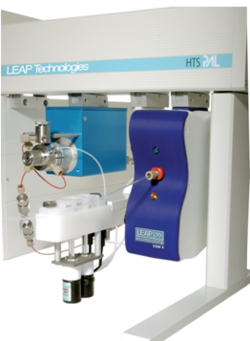Column Heating
From LEAP
(New page: {{LSApp |name = Valve Self-Washing System – II |image = VSW.png |type = Washing LC Valve |id = Valve Self-Washing System – II |description = Prod...) |
|||
| Line 8: | Line 8: | ||
=== Main Features === | === Main Features === | ||
| - | + | This product is a convenient and versatile column temperature control unit especially useful in UHPLC separations. | |
| - | + | ||
| - | + | ||
| - | + | ||
| - | + | ||
| - | + | ||
| - | + | ||
| - | + | ||
| - | + | For those separations being performed at elevated temperatures this unit provides pre-heating of solvents to stabilize and reduce temperature gradients throughout the resolving column. The separation temperature control is an often overlooked variable of concern especially in the rapid LC world of today. Reliable temperature control (which can be affected by fluctuations in laboratory ambient temperature) is an important variable to control in order to alleviate retention time variability. | |
| - | + | ||
| - | + | ||
| - | + | ||
| - | + | ||
| - | + | ||
| - | + | ||
| - | + | Additionally, separations performed at elevated temperature will generally have lower operating pressures due to the reduction of solvent viscosity at these higher temperatures. | |
| - | + | ||
| - | + | ||
| - | + | ||
Revision as of 17:01, 19 February 2009

| Valve Self-Washing System – II |
| Application Type | |
| Washing LC Valve | |
| Application ID | |
| Valve Self-Washing System – II | |
| Description | |
| Product Brochure |
Main Features
This product is a convenient and versatile column temperature control unit especially useful in UHPLC separations.
For those separations being performed at elevated temperatures this unit provides pre-heating of solvents to stabilize and reduce temperature gradients throughout the resolving column. The separation temperature control is an often overlooked variable of concern especially in the rapid LC world of today. Reliable temperature control (which can be affected by fluctuations in laboratory ambient temperature) is an important variable to control in order to alleviate retention time variability.
Additionally, separations performed at elevated temperature will generally have lower operating pressures due to the reduction of solvent viscosity at these higher temperatures.




